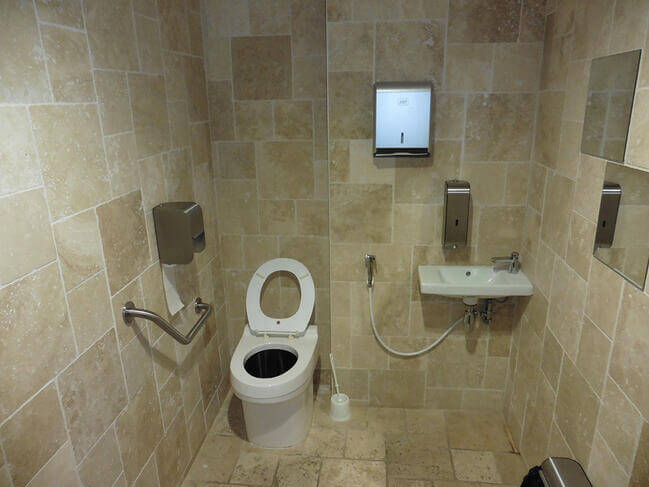How do wealthy industrialised societies dispose of their excrement? Research led by the anthropologist Marine Legrand on contemporary management methods for human urine and faecal matter provides an overview. A subject that is both surprising and fascinating if you look into it!
Studying how contemporary societies behave towards their waste has developed in recent years, leading to the emergence of a specific term, waste studies. Within this spectrum, relations to urine and faecal matter still garner little attention. This is especially true in regions that have been wealthy and industrialised for a long time, such as Europe and North America, where problems relating to accessing water and sanitation appear to be solved once and for all. Whenever the issue is discussed, it is implicitly via studies of sanitation networks (sewers, water treatment plants), which focus on economic models and the policy strategies that govern their deployment, the working conditions of those who provide maintenance for them, and citizen involvement in wastewater (ANR Egout Project).
A different starting point was chosen for this exploratory survey in environmental anthropology, which was initiated in 2018 by Marine Legrand – an anthropologist and researcher in charge of animation at the water, environment, and urban systems laboratory LEESU, a joint unit between École des Ponts Paris Tech and Université Paris Est Créteil, – in connection with the research and action programme rooted in territorial ecology known as OCAPI. The latter focuses on the management of human excreta within a context of ecological transition, in other words returning the fertilising resources contained in human excrement to farmland, following the example of manure, liquid manure, and other droppings. This return to the soil has been largely abandoned since the advent of sewerage.
The study coordinated by the anthropologist is based on the cultural aspects relating to the management of urine and faecal matter. It examines the relations that our contemporaries maintain – or actually do not maintain – with their excrement, in a context in which sewerage turns its management into a black box of sorts. Providing a general response to this question was of course impossible.
The toilet… and what next?
Once the topic was identified, a position had to be selected. The title of the project, “The toilet… and what next?” is deliberately vague, with multiple interpretations. The first is factual: who knows precisely what happens when they flush the toilet? This is a way of signalling that the flush is a material and symbolic “system of forgetting” with respect to human waste. The second is an invitation to play things down, as bodily function is subject to a widespread, albeit not universal, taboo. In Europe, this taboo grew stronger over the centuries as part of a civilising process, leading to the repression of anything that reminds humans of their animal condition (hair, bodily odours, sexuality, and even death itself) – a mindset shared by numerous engineers. When customs relating to bathrooms are discussed, the expression “it is highly cultural” frequently comes up, along with the “acceptability” of related technological innovations. Strangely, the conversation ends there! It is this “after” – after the silence that surrounds the world of excrement – that is precisely of interest to Legrand. The third aspect is prospective. How to tell what is coming? Not just the systemic risks faced by current infrastructure, but also the alternatives that could emerge in the years to come. Combining study, creation, and collective action, the effort entails the capacity of research to be committed, to transform reality.
Alternatives to sewerage: setting out from existing practices
Once reformulated, the goal of this research is to focus on practical methods for challenging the current hegemony of sewerage7 in France. The strategy turns to the margins, where alternative practices have been pursued, sometimes for a long time, and where it is quite concretely a matter of “taking care of our business” of “dealing with our shit”. What new imaginaries and knowledge are being built? Such a starting point makes it possible to explore the issue with a wide range of actors, in order to get a better grasp of this landscape.
This effort, led by OCAPI’s Social Dynamics research focus, is based on anthropology, sociology, geography, town planning, and design. The research is often collective. Over the course of surveys, urban and rural worlds have echoed one another with respect to “human fertilizers”. In France, returning urban organic matter to the soil was an important practice, and was developed on an industrial scale in the nineteenth century. Today, the spread of dry toilets has chiefly occurred in the countryside since the 1960-70s, led by environmental sanitation, a social movement critical of sanitation infrastructure. However, it was not until recent media coverage of scientific research emphasising the urban fertilizer “deposits” lost in bathrooms – as well as the prospect of a large-scale reappropriation – that the discredit associated with dry toilets was dispelled. This is, paradoxically, all part of an effort to give legitimacy to these practices. Finally, at a time when the circular economy has made its way into the toilet, could flushing be going out of fashion?


